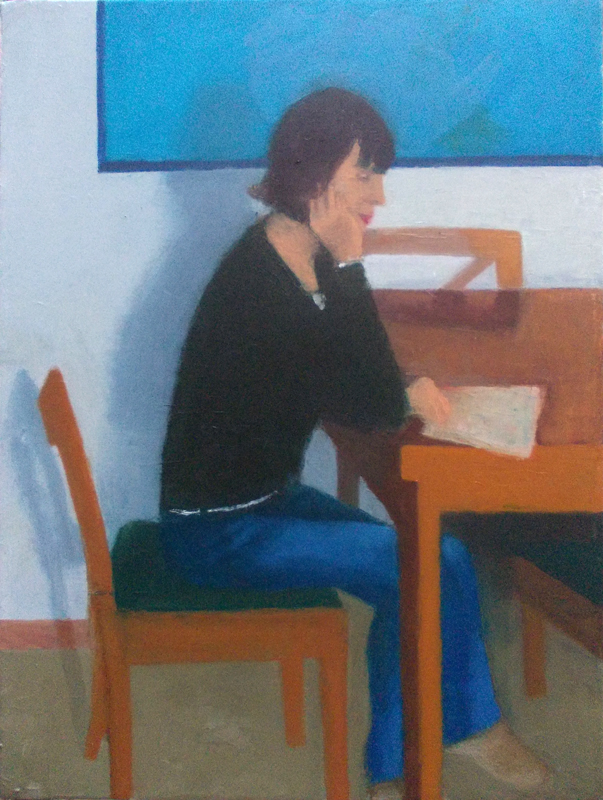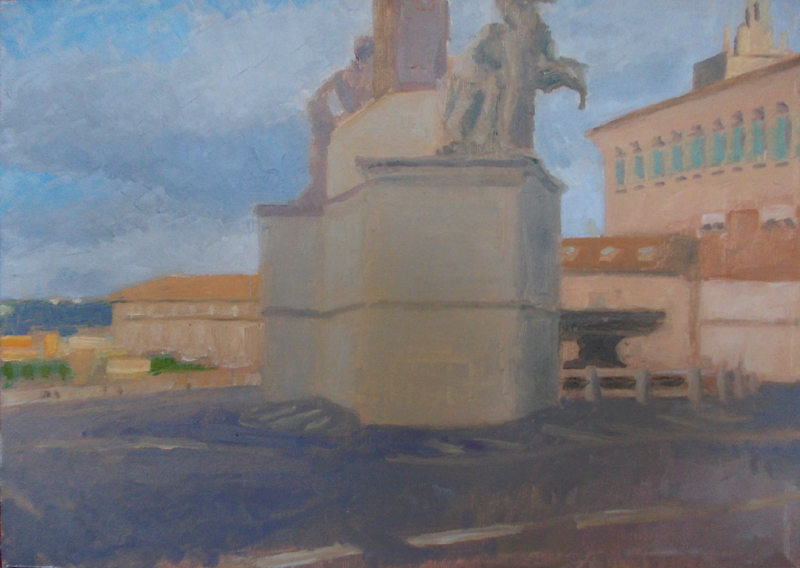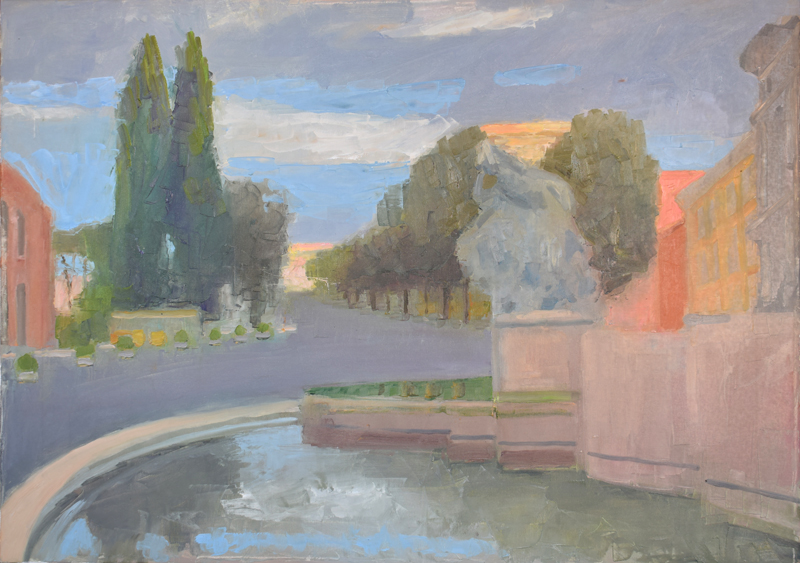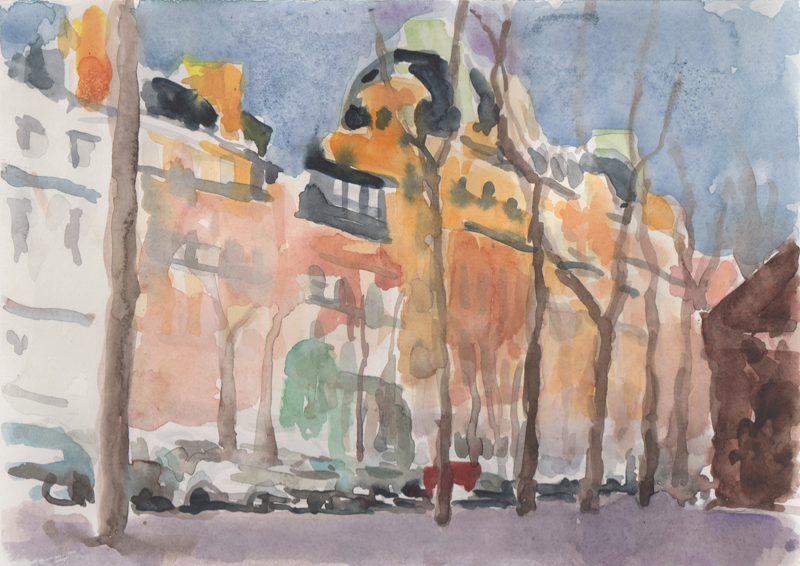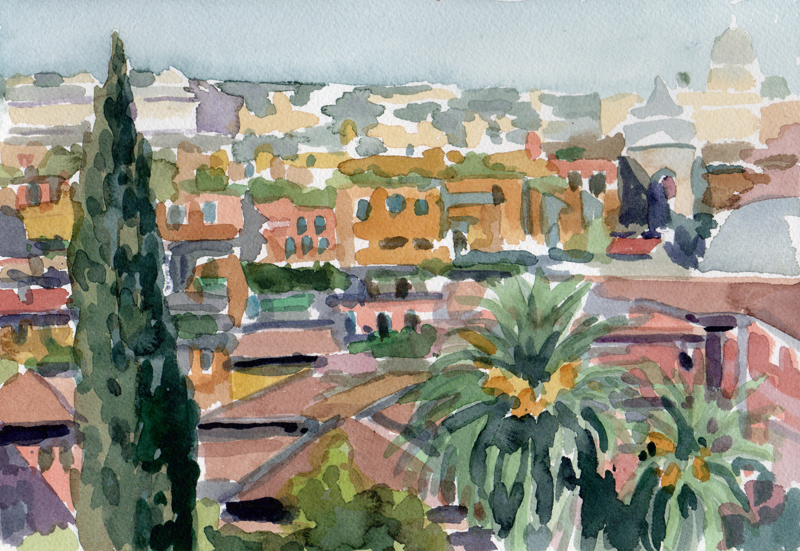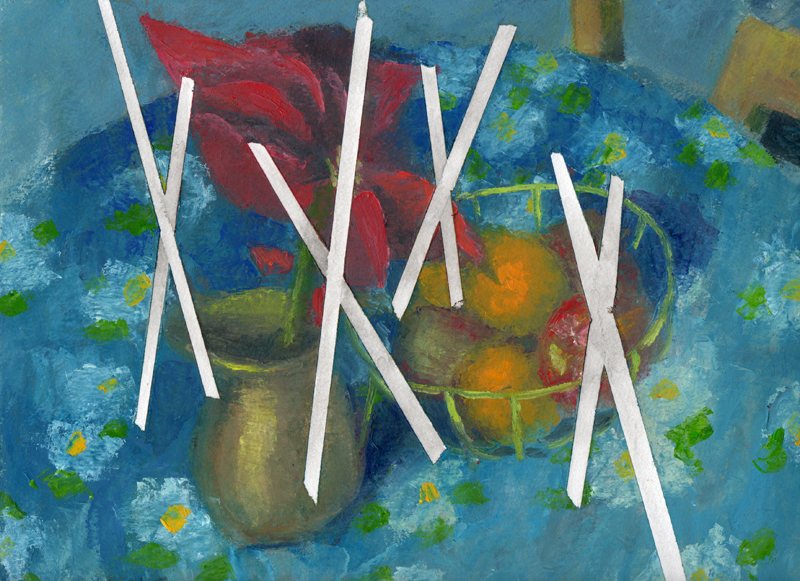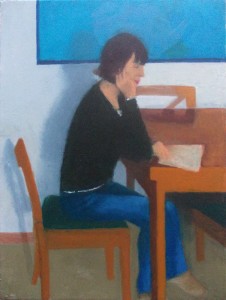
If I deduce that the subject of what I paint lies within my ocular vision, then it becomes very easy to define what a ‘painted figure’ is. Any recognizable sign of the human body in a painting which can recreate the coherent memory of a person in my imagination should be enough to classify that painting as figurative. I purposely put the adjective ‘coherent’ in front of the word ‘memory’ and not in front of the word ‘person’. It is not important that the body of the painted person necessarily be coherent; in fact, after cubism the fragmented figure is a dominant theme in XXth century painting.
In a painting, the ‘coherent memory of a person’ means that the viewer’s imagination can ‘complete’ the information that the painting offers in terms of a recognizable figure. In the same way, the artist, by use of his or her imagination, eventually ‘completes’ in the painting what the ocular vision of the model provides for. Therefore when considering a painting, the imagination plays a dual role; the imagination of the artist and the imagination of the viewer. This is the case in all painting.
However, I am finding that my imagination plays an extremely strong role in the production of a painting with the human form. Maybe it depends on the fact that the figure is charged with emotion and memories that affect my imagination and consequently that of the viewer. In any case, this aspect of painting is new to me since I have started working with the figure again.[whohit]-Painted-Figure_EN-[/whohit]
